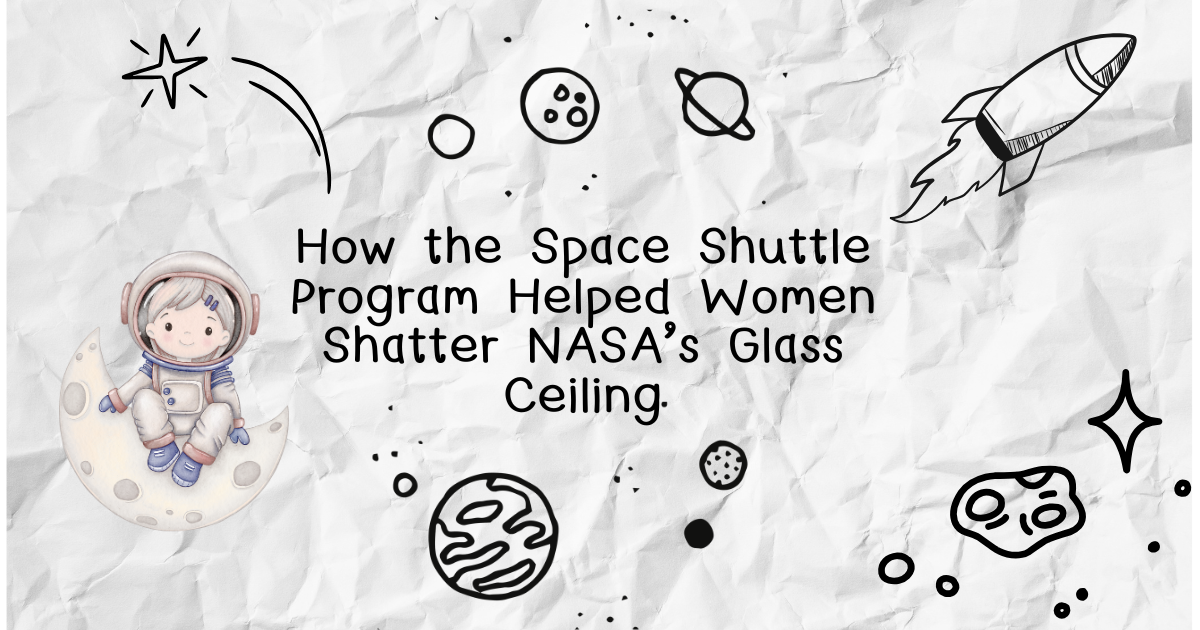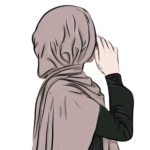In 1978, NASA introduced 35 new astronauts, marking the dawn of a new era in space exploration — and for the first time, six of them were women. This milestone set the stage for the Space Shuttle program to begin breaking one of NASA’s biggest barriers: gender equality in space.
On June 18, 1983, the Space Shuttle Challenger lifted off on mission STS-7, the seventh Shuttle flight for the world’s first reusable spacecraft. Among the five crew members was Dr. Sally Ride, a physicist from California who became the first American woman in space.
Before Ride’s historic journey, only two women had ever traveled beyond Earth. Soviet cosmonaut Valentina Tereshkova paved the way in 1963, becoming the first woman in space. Nearly 20 years later, in 1982, Svetlana Savitskaya followed — a direct response to the U.S. preparing to send its first female astronaut.
Interestingly, while an “Astronaut Barbie” doll in a silver suit appeared in American toy stores as early as 1965, real American women had to wait much longer for their opportunity to make history in space.
#1By the 1980s, both the world and fashion had undergone dramatic changes.
The 1985 Astronaut Barbie was reimagined with a glamorous twist — glittery silver leggings, a matching handbag, fuchsia puffed sleeves, a short skirt, and pink knee-high stiletto boots.
Of course, high heels were never part of NASA’s official astronaut gear. However, the agency did acknowledge its first six female astronauts — Sally Ride, Judy Resnik, Anna Fisher, Kathryn Sullivan, Shannon Lucid, and Rhea Seddon — by including a small selection of cosmetics in their Personal Preference Kit (PPK). The kit contained everyday essentials such as mascara, eye shadow, and lipstick, giving these pioneering women a personal touch as they prepared for life in orbit.
#2Interestingly, Sally Ride never used the make-up kit provided by NASA.
The same was true for her colleague Kathryn Sullivan, who in 1984 became the first American woman to perform a spacewalk.
“Several of us reacted with a mix of bemusement and annoyance at the so-called ‘Female PPK’ cosmetic kit,” Sullivan later explained. She went on to play a vital role in repairing the Hubble Space Telescope and co-authored How to Spacewalk: Step-by-Step with Shuttle Astronauts. For her, the kit implied that women astronauts might be “less mission-focused” than their male counterparts, or that they were expected to fulfill some outdated journalistic stereotype.
Not all of NASA’s trailblazing women rejected the cosmetics, however. Rhea Seddon openly admitted on her website:
“I spoke up for the minority. If photos were going to be taken of me in space, I didn’t want to fade into the background. So, I requested a few basic items. It was interesting to me that I wasn’t the only space traveler whose in-flight pictures showed a touch of lipstick and blush.”
#3Sally Ride may not have worn make-up in space, but the Personal Preference Kit (PPK) sparked plenty of debate.
According to Lynn Sherr, author of Sally Ride: America’s First Woman in Space, the women astronauts had already pushed NASA to swap out items like British Sterling deodorant, men’s hair tonic, and Old Spice shaving cream for more female-friendly essentials.
Still, there were moments when NASA seemed to forget that women were now part of the astronaut corps. Sherr recalls that in 1978, during the test landing of the Space Shuttle Enterprise at Edwards Air Force Base, every visiting astronaut — including the women — received identical souvenirs: gold-plated tie clips and cufflinks.
While gifts and cosmetics might have been a matter of preference, some aspects of preparing for space required serious attention to biology. Kathryn Sullivan, one of the six women in NASA’s 1978 astronaut class, later shared a story about NASA’s attempt to plan for menstrual needs in space:
“They put some tampons in the PPK for Sally to look at, and she pulled one out — it was like unreeling a string of sausages.”
The anecdote underscores just how unfamiliar NASA was with women’s basic health requirements at the time — and how female astronauts had to help reshape everything from space gear to cultural attitudes.
#4NASA may have mastered the engineering required to send astronauts into space,
but when it came to understanding women’s basic needs, the agency was still learning.
In an earlier interview, astronaut Kathryn Sullivan recalled one of the more memorable moments:
“The NASA guys had realized that women might get their periods while flying. They put some tampons in the Personal Preference Kit for Sally to look at, and she pulled one out — it was like unreeling a string of sausages. Tampon, tampon, tampon… there were about 100. And they asked, ‘Is that enough?’ Sally just laughed and said, ‘No, no — that’s way too much, thank you very much.’”
The incident highlighted how NASA’s male-dominated culture was unprepared for the realities of sending women into orbit. Sullivan explained that many of the most obvious — and sometimes amusing — missteps happened in crew equipment design: clothing, parachutes, helmets, and hygiene supplies.
“I think these were all innocent gaffes,” Sullivan said, “and that the teams responsible did the best they could with what they knew.”
#5NASA’s Space Shuttle Era: Breaking Gender Barriers in Space
While NASA didn’t always get it right when it came to its first female astronauts, the agency did make some important strides.
For instance, NASA had long used the Maximum Absorbency Garment (MAG) — essentially an adult diaper worn during launches, landings, and spacewalks. Since every U.S. astronaut before the Shuttle program had been male, the design was originally tailored for men. But when six women joined the 1978 astronaut class, NASA adapted, creating customized “disposable absorption and collection trunks” to ensure proper fit for women of different heights and body types.
“NASA had made the commitment to accepting women into the program,” explained astronaut Anna Fisher in the BBC radio documentary The Equal Rights Stuff. “Even if you looked in mission control, there were women. But very few were flight controllers — and there wasn’t a female flight director until 1984.”
This was a massive cultural shift. Historically, the assumption had been that only men had “the right stuff.” Nearly all previous astronauts were military test pilots, with the exception of Apollo 17’s Harrison Schmitt, a geologist who still completed military flight training to qualify.
The Shuttle era changed that standard. Of the 35 astronauts selected in 1978, only 15 were pilots. The rest were mission specialists: scientists, physicians, and engineers — including six women.
Not everyone welcomed the change. Astronaut Mike Mullane, a decorated Air Force pilot and Vietnam veteran, later admitted in his memoir Riding Rockets that he questioned how non-pilots, especially scientists, would perform in high-risk situations.
But those doubts quickly faded. “It didn’t take long to realize that these people brought a lot to the table,” Mullane later acknowledged.
#6NASA’s Gender Shift: From Skepticism to Respect
When I visited astronaut Mike Mullane at his New Mexico home years later, he was just as candid as in his memoir about the sexism he once held — and his initial doubts about women and other mission specialists in NASA’s Space Shuttle program.
“You come out of Catholic school and you learn that women only have a couple of functions. The prime role of a woman is to be a mother and stay-at-home wife,” Mullane admitted. “That was hammered into us all those years. So it was unusual to meet women who weren’t dental hygienists or secretaries. I was skeptical — and most military guys were — about how these people would adapt to our world of high-performance flying. But it didn’t take long to realize they brought a lot to the table.”
On his first mission, Mullane flew alongside Judy Resnik, the second American woman in space, and quickly grew to respect her. While he admitted a rocky relationship with Sally Ride, he later acknowledged her historic achievements:
“Sally showed she really did have the right stuff.”
#7Breaking Barriers Amid Stereotypes
Despite being exceptionally qualified, NASA’s first six female astronauts often faced dismissive attitudes and ridicule.
During their training, many questioned whether women were even necessary on Shuttle missions. Kathryn Sullivan, the first American woman to perform a spacewalk, recalled:
“One reporter pointed out that men had done all the piloting, spacewalks, and science in Mercury, Gemini, and Apollo — so surely they could do the same on the Shuttle. Were we unnecessary? Just along to watch the men?”
The skepticism extended beyond journalism. Popular culture joined in with jokes at the women’s expense.
“Johnny Carson joked on The Tonight Show that the Shuttle would be delayed so Sally could find a purse to match her shoes,” said Lynn Sherr, journalist and author of Sally Ride: America’s First Woman in Space.
Even during the pre-flight press conference for STS-7, Ride herself was confronted with blatant sexism. A reporter from Time Magazine asked her, “If something goes wrong during training, do you… weep?”
These remarks revealed the biases female astronauts had to battle long before they ever launched into orbit.
#8Proving Themselves — and Inspiring a New Generation
Despite being highly qualified, NASA’s first six female astronauts had to constantly prove themselves. Every mission was a test not only of science and engineering, but also of whether women truly “belonged” in space. In the end, they succeeded brilliantly.
Take Shannon Lucid, for example. She flew on five Shuttle missions, conducted groundbreaking scientific research, and from 1996 to 2007, she held the world record for the most time in space by a woman.
But before those achievements could happen, the critical step was getting selected — and for that, NASA had an unlikely ally: actress Nichelle Nichols.
#9Star Trek’s Uhura and NASA’s Recruitment Push
Nichelle Nichols was best known as Lieutenant Uhura in the original Star Trek (1966–1969), where she was the only Black actor with a regular role on the show. Her presence on the bridge of the fictional USS Enterprise was more than symbolic — it offered a vision of diversity in the future of space exploration.
By the early 1970s, NASA’s record on inclusion was abysmal. In fact, in 1973, NASA’s equal opportunity officer Ruth Bates Harris published a scathing report calling its minority hiring program “a near total failure.” She was promptly fired, but after Congressional hearings and public pressure, the agency rehired her in 1974. That left NASA with something to prove when it opened its next astronaut selection process.
Nichols became the perfect partner. She appeared in NASA recruitment videos, toured schools to encourage young women and people of color, and narrated the 1979 National Air and Space Museum promotional film What’s in it for Me? Her work directly inspired one of the most diverse astronaut classes in American history — the very group that included Sally Ride, Judith Resnik, Shannon Lucid, Kathryn Sullivan, Anna Fisher, and Rhea Seddon.
#10Breaking Barriers and Expanding Representation
NASA’s 1978 astronaut class wasn’t just historic for including women — it was also the most racially diverse group of recruits the agency had ever assembled. Among the 35 trainees were three African Americans and one Asian American, alongside the six pioneering women.
Before her tragic death in the Challenger disaster, astronaut Judith Resnik — the first American Jewish woman in space — often credited Nichelle Nichols for inspiring her to pursue the astronaut program. Nichols’ influence didn’t stop there. Years later, Mae Jemison, who became the first Black woman in space in 1992, also cited Nichols’ groundbreaking role as Star Trek’s Lieutenant Uhura as a powerful motivator.
#11NASA Today: A More Inclusive Agency
Fast forward to today, and NASA looks dramatically different. Loral O’Hara, an engineering mission specialist, recently joined the crew aboard the International Space Station (ISS). She flew alongside Jasmin Moghbeli, a Kurdish-American engineer and test pilot with over 150 combat missions to her name. Their presence underscores how far NASA has come — proving that “the right stuff” is no longer reserved for white male military pilots.
As journalist Lynn Sherr explains: “Sally Ride’s position was that it took NASA 20 years to get there, but once they made the decision to include women and minorities, they were all in. I think Sally saw NASA as the equal opportunity employer it had finally become.”






